Written by Rhoda Burrows, former Professor & SDSU Extension Horticulture Specialist.
Description
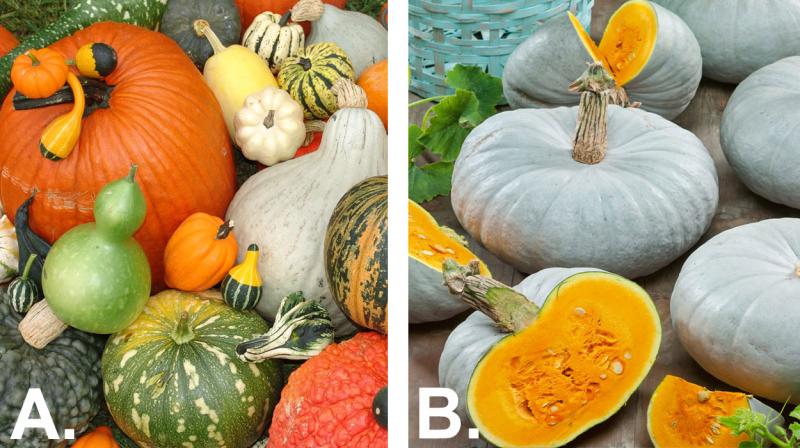
Varieties: There is a wide variety of winter squashes and pumpkins (Figure 1). They are distinguished from summer squash by the fact that summer squash (for example, zucchini) are eaten as immature fruit, whereas winter squash and pumpkins are harvested as mature fruit. Winter squashes include: acorn, butternut, buttercup/kabocha, Delicata, turban, Hubbarb, Lakota and a number of others. Pumpkins may be bred strictly for ornamental use (these are still technically edible, but usually stringy and less flavorful), for pies, for seed or for multi-purpose use, so read variety descriptions carefully! In addition, there are gourds, mostly inedible, in a wide range of sizes, shapes and colors.
Planting

Timeline:
- Plant after chance of frost has passed or when soil temperatures reach 70 degrees Fahrenheit (Figure 2).
- Visit the Mesonet at SDState for growing season information specific to your area.
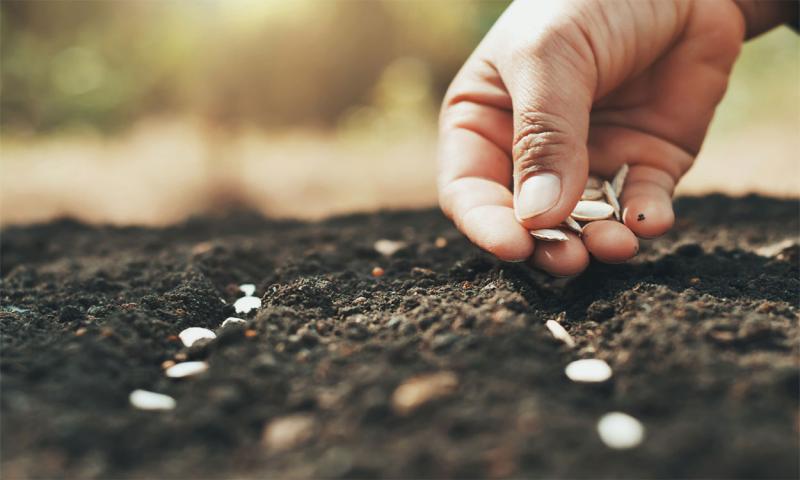
Sowing and Transplanting:
- Direct seeding is the preferred method for starting squash, as the seed germinate quickly and easily, and roots will grow deeper than if transplants are used. If transplants are used, they should be young, having no more than one or two true leaves.
- Sow seeds about half an inch deep and about two inches apart. Spacing will depend on the type and whether it is a “bush” variety. In general, allow three to four feet of space on either side of the row for the vines to spread. After seedlings emerge, thin to stand two to six feet apart.
- A hill (soil piled two to three inches high) of three to four seeds sown close together is another way to plant squash; this is good especially in heavy clay soils. Allow five to six feet between hills.
Planting Note: A common misconception is that planting squash or cucumbers near gourds can cause abnormal fruit. Summer squash, gourds and some types of pumpkins and winter squash can cross-pollinate each other. However, the result will only impact the seed and the resulting plant the following year; it will not impact the current season’s fruit. So, unless you plan on saving the seed, you can plant these vegetables next to each other without any ill effects. If you do save the seed from your own garden, note the warning below about bitter-tasting squash!
Plant Care
Watering: Vine crops need at least one inch of water from rainfall or irrigation each week during the growing season. Always soak the soil. Drip irrigation is preferred to reduce leaf diseases.
Fertilizer: Apply well-rotted or composted manure in the fall or early in the spring before planting. Never use fresh manure within six months of harvest, as it may contain pathogens that could contaminate your food. Sprinkling one to two tablespoons of lawn fertilizer around the plant once the plant starts to flower can help it produce more fruit (make certain it contains only fertilizer and that it is not a “weed-and-feed” product containing herbicide). If the plant is already growing well with large, dark-green leaves, it likely does not need any additional fertilizer.
Weeding: Frequent, shallow cultivation will kill weeds before they become a problem.
Mulching: Plastic mulch is sometimes used to decrease weeds. Apply black, plastic mulch or a woven landscape fabric once the soil has been prepared in the spring. A clear plastic placed over the soil for a few days before planting can help warm the soil for good seed germination; remove it before planting.
Flowers: Squash plants bear separate male and female flowers, and pollen must be transferred from the male flowers to the female flowers by insects, mostly bees. One can identify the female flowers by the miniature fruit at the base. Squash flowers can also be harvested the day they begin to open, and they can be fried or stuffed; this is a good use of male flowers when they appear a few days before female flowers.
Pest and Diseases

Major Pests:
- Squash Bugs: Squash bugs (Figure 4-A) feed on foliage and can harm young plants. In high numbers they can inject a toxin that kills the foliage or wilts the plant. They often congregate under lower leaves that are touching the ground.
- Striped Cucumber Beetles: Striped cucumber beetles (Figure 4-B) damage plants by eating leaves as well as stems and fruit. They are also a potential vector of bacterial wilt and squash mosaic virus.
- Squash Vine Borers: Squash vine borers (Figure 4-C) can kill plants as they tunnel through vines. Sometimes a vine can be saved by slitting the stem enough to remove the larvae at soil level and heaping moist soil over the crown and nearby leaf nodes to encourage new roots to form.
- For methods of pest control, view the additional resources at the end of this article.
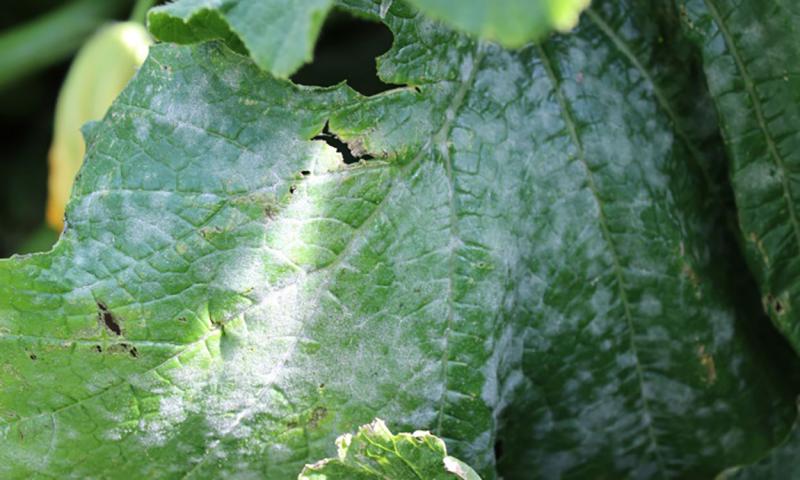
Diseases:
- Powdery Mildew: This disease is common during hot weather. Leaves can become covered in a whitish mold (Figure 5). Many varieties of squash and pumpkins are resistant; look for these when selecting seed.
- Management: A home remedy for powdery mildew is two tablespoons baking soda and one teaspoon of cooking or horticultural oil (to help it spread on the leaf) in one gallon of water. This must be applied after rains and as new foliage grows. Because it contains sodium, this remedy should not be applied year after year, because the sodium could build up over time and is harmful to the soil. A similar commercial formulation uses potassium bicarbonate instead of baking soda, avoiding the sodium.
- Minor Problems: There are an array of leaf diseases, some of which can also cause blemishes or rots on the fruit. These are usually more common if you grow squash or pumpkins in the same spot more than one year. They are also more common in wetter summers.
WARNING: Quite rarely, a genetic mutation or an accidental crossing with wild cucurbits or gourds can occur that produces a plant that bears very bitter fruit. The bitter substance is cucurbitacin, and it is poisonous. Even in very small amounts (one bite), ingesting it can cause nausea, stomach cramps and diarrhea. If you taste a squash and find it very bitter, spit it out and discard any fruit from that plant (and the plant itself).
Harvest
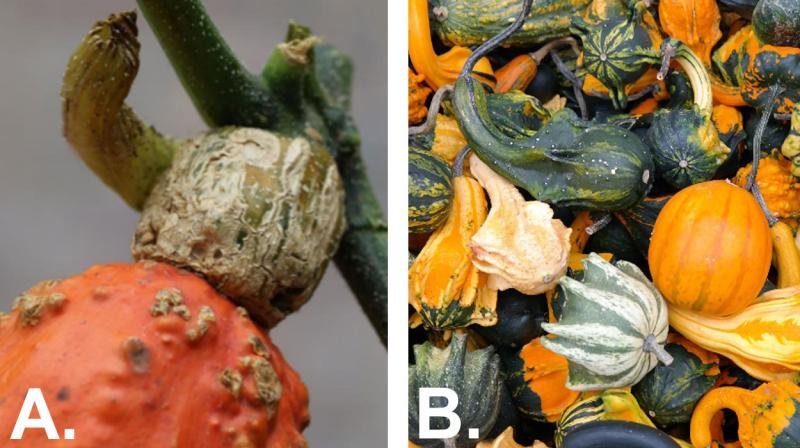
Days to Harvest: 80 to 115 days, depending on variety.
When to Harvest:
- The fruit are ready to harvest when the rind hardens enough that it cannot be easily penetrated with a fingernail. Also look for the stem to develop “corking” (Figure 6-A).
- Harvest acorn-type squash when the ground spot (where the fruit touches the ground) turns golden orange.
- Harvest gourds once the stem turns brown and dries (Figure 6-B). Individual gourds can be cut from the vine, leaving the vine to produce more fruit.
Storage
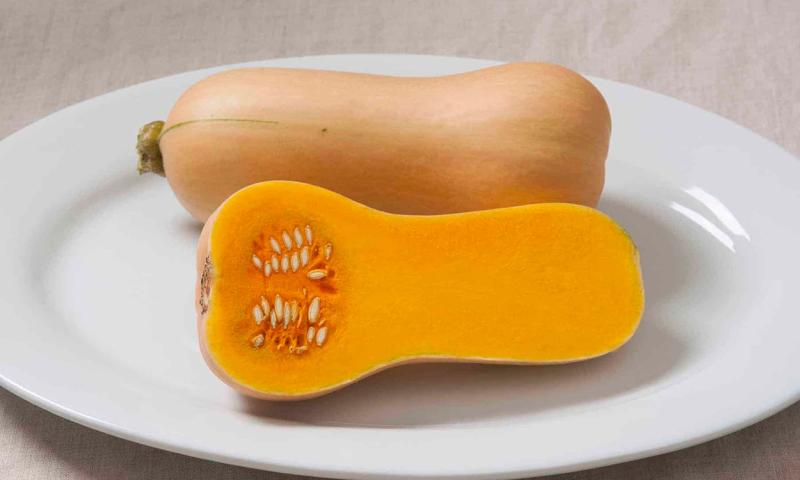
- Winter Squash and Pumpkins: Cure most winter squash and pumpkins by storing in a warm area (75-85 degrees Fahrenheit) for a week or two (do not do this with acorn squash). This will help the rind harden to protect the squash. After that, storing the fruit in a cool spot, such as a basement floor, will help prolong storage life. Some types of squash need to be aged for best flavor; butternut squash will sweeten over a few weeks’ time (Figure 7). Hubbarb squash can be kept up to six months, though the eating quality will decline some over time.
- Gourds: To keep colors bright, store them in a cool place out of direct sunlight. They may be polished with a light layer of cooking oil or light furniture wax, but don’t use varnish or shellac, as moisture will not be able to escape, and the gourd will eventually rot from the inside. Gourds, such as bottle grourds, that are grown for their shell rather than their color can simply be left outdoors overwinter to cure.
Preparation
- Cooking Tips: View our Pick it! Try it! Like it! resources for squash and pumpkin to learn cooking tips, recipes and more!
- Nutrition Facts: Fat free, cholesterol free, sodium free, high in vitamin C and vitamin A.


